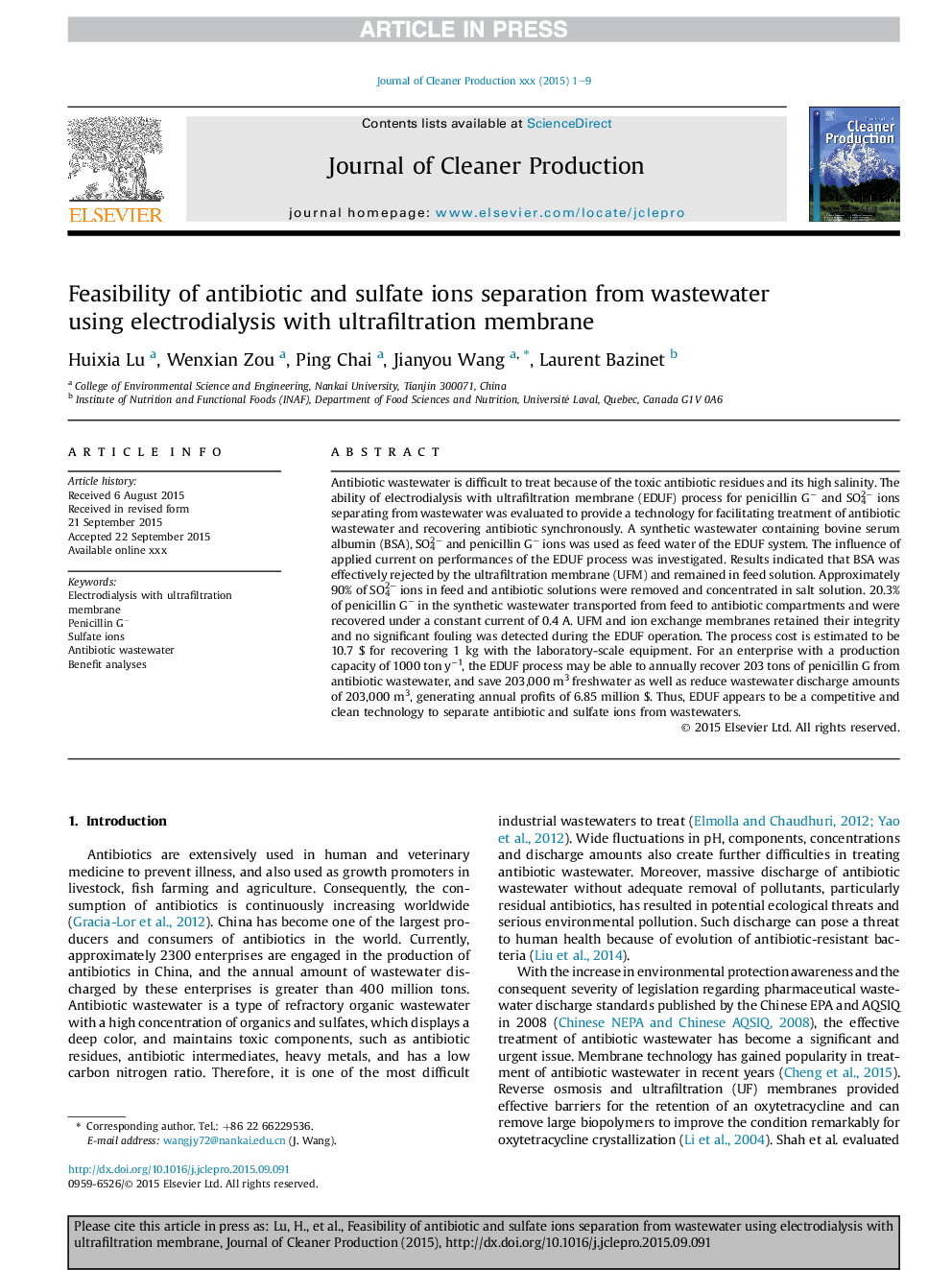| Article ID | Journal | Published Year | Pages | File Type |
|---|---|---|---|---|
| 10687895 | Journal of Cleaner Production | 2016 | 9 Pages |
Abstract
Antibiotic wastewater is difficult to treat because of the toxic antibiotic residues and its high salinity. The ability of electrodialysis with ultrafiltration membrane (EDUF) process for penicillin Gâ and SO42â ions separating from wastewater was evaluated to provide a technology for facilitating treatment of antibiotic wastewater and recovering antibiotic synchronously. A synthetic wastewater containing bovine serum albumin (BSA), SO42â and penicillin Gâ ions was used as feed water of the EDUF system. The influence of applied current on performances of the EDUF process was investigated. Results indicated that BSA was effectively rejected by the ultrafiltration membrane (UFM) and remained in feed solution. Approximately 90% of SO42â ions in feed and antibiotic solutions were removed and concentrated in salt solution. 20.3% of penicillin Gâ in the synthetic wastewater transported from feed to antibiotic compartments and were recovered under a constant current of 0.4 A. UFM and ion exchange membranes retained their integrity and no significant fouling was detected during the EDUF operation. The process cost is estimated to be 10.7 $ for recovering 1 kg with the laboratory-scale equipment. For an enterprise with a production capacity of 1000 ton yâ1, the EDUF process may be able to annually recover 203 tons of penicillin G from antibiotic wastewater, and save 203,000 m3 freshwater as well as reduce wastewater discharge amounts of 203,000 m3, generating annual profits of 6.85 million $. Thus, EDUF appears to be a competitive and clean technology to separate antibiotic and sulfate ions from wastewaters.
Related Topics
Physical Sciences and Engineering
Energy
Renewable Energy, Sustainability and the Environment
Authors
Huixia Lu, Wenxian Zou, Ping Chai, Jianyou Wang, Laurent Bazinet,
